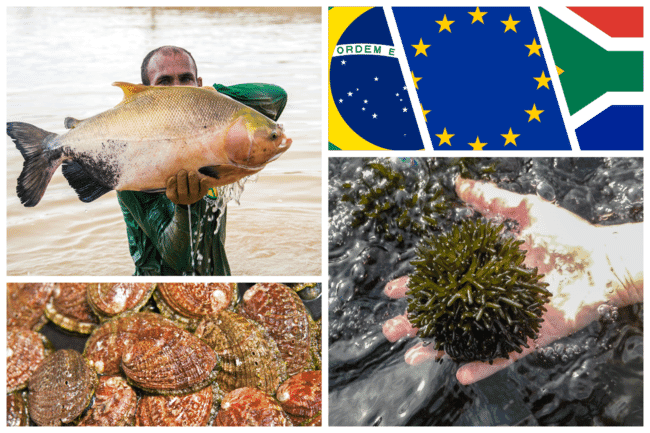The €8 million AquaVitae project involves researchers from a consortium of 35 institutions from 15 countries, from around the Atlantic, with participants from Europe being joined by others from Brazil and South Africa. Earlier this month they met online to share results from the first year of the project.

The pilot projects are the first outputs from the collaboration between aquaculture companies and researchers, who are working to develop new solutions for low-trophic species production, including macroalgae, shellfish, echinoderms, shrimp and low trophic finfish. The prototypes range from new production methods for algae to new combinations of integrated multi-trophic aquaculture (IMTA).
“They will be further developed throughout the life of the project. But this is an excellent starting point,” said project coordinator Philip James, a senior scientist at the Norwegian Institute of Food, Fisheries and Aquaculture Research (Nofima).
AquaVitae’s mission is to introduce new low trophic species, products and processes in marine aquaculture value chains across the Atlantic.
“Over the next 24 months, the prototypes will be reviewed in regard to their suitability to meet the needs, demands and safety of consumers, environmental sustainability and economic viability,” James added.
He believes this process will help ensure the viability and success of the new species, processes and products, which will form the results of the project.
The annual meeting was originally supposed to be held in Flórianopolis, Brazil. But due to the Covid-19 pandemic, the 80 participants met virtually instead.
The meeting lasted three days and included a workshop with Brazilian stakeholders, in support of increased research collaboration between Europe and Brazil.
“We had a great discussion and raised important topics to base the next steps for developing closer links between the Brazilian and European aquaculture industries,” says Eric Routledge, Deputy Head of Research at EmBraPa Fisheries and Aquaculture.
Other attendees included the Brazilian Fishfarming Association-Peixe Br, the Brazilian Shrimp Association, the Ministry of Agriculture, the National Agriculture Commission, São Paulo State Industries Federation – FIESP, or aquaculture producers.
From Europe, decision makers, project and platform members from DG Research and Innovation, the European Aquaculture Technology and Innovation Platform – EATiP, AANChOR, BlueEco Net and Innovation Norway provided different solutions to support trans-Atlantic collaboration.
The meeting also had representation from the South African aquaculture sector.
Brazilian cooperation
AquaVitae includes three projects that are being conducted in Brazil, working with IMTA biofloc, freshwater species (pirarucu and tambaqui) and marine species (Brazilian flounder). Furthermore, other projects are also conducting part of their activities in Brazil - working with oysters, feeds and algae.
The collaboration is supported by Brazilian research centres, universities and companies participating in the AquaVitae consortium. Particularly, the Brazilian Agricultural Research Corporation-EmBraPa, the Federal University of Rio Grande, the Federal University of Santa Catarina, a Universidade Estadual Paulista and organic aquaculture producer Primar Aquacultura.



